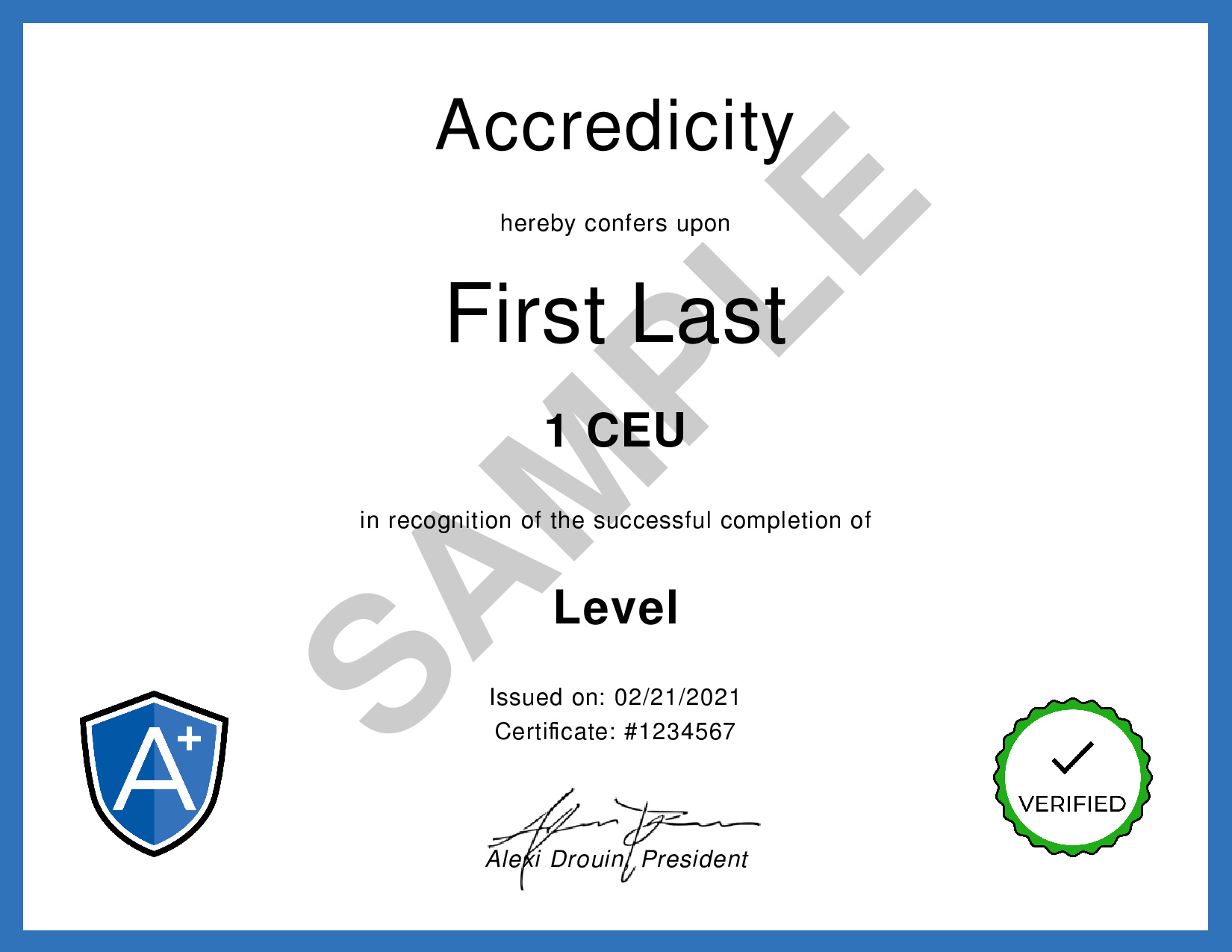11 Ways to Stop Procrastinating for Good | Big Think
We Make Your Education Count

Get the Credit You Deserve and Become the Most Attractive Job Candidate by Earning and Posting A+ Badges to Your Linkedin Profile.
Sign Up to Get Started at Accredicity
|
Discover 11 simple steps to break the procrastination cycle and become more productive with this enlightening video. This video by Big Think featuring Tim Ferriss presents 11 ways to stop procrastinating for good. It covers topics such as how to pursue longer-term happiness instead of momentary pleasure and using mini homework assignments and lower standards to feel successful. Other tips include using the Pomodoro Technique, inspiring yourself with outside sources, and allowing yourself to give into procrastination in controlled doses. Finally, it explores the concept of structured procrastination and the importance of always looking towards the future. With this advice, you can finally break the cycle of procrastination and get back on the path to success. Learning Outline1. Understand the difference between momentary happiness and longer-term happiness. Instructional ContentWe all struggle to stay focused and motivated, but procrastination can be a major obstacle to achieving our goals. Whether it's finishing a project at work or getting in shape, the temptation to put things off can be hard to resist. Fortunately, Tim Ferriss, author of the New York Times bestseller, Tools of Titans, and other experts have some great advice on how to beat procrastination and stay productive. The first step is to understand the difference between inspiration and motivation. Inspiration comes from outside sources, such as a motivational speech or an inspiring book, and can be a great way to get started on a project. But in order to keep going, you need motivation from within. This means having a clear understanding of why you are doing something and why it matters to you. Another great way to stay on track is to set small goals and reward yourself. For creative projects, start with mini-homework assignments, such as coming up with one word or one line for a song by tomorrow. For exercise, start small and work your way up, such as five to ten minutes at the gym three times a week. This way, you will be more likely to feel successful and you can always do extra for extra credit. The Pomodoro Technique is also a great tool for staying focused. This involves setting a timer for 25 minutes and working without any distractions. Once you’re done, take a five-minute break and reward yourself. Positive constraints are important for creative people, so setting these limits can help you stay on track and avoid procrastination. Finally, recognize that you can’t just suppress your urge to procrastinate. Allow yourself to take a five-minute break every hour to look at tweets or surf the internet. This way, you won’t be overwhelmed by the task and feel like a failure. All of these techniques can help you stop procrastinating and stay productive. With a little discipline and the right strategies, you can stay focused and reach your goals. Productivity
|

Procrastinating is something we all face, but it doesn't have to be that way. There are a few different tactics to help stop procrastinating and get things done. One of the first steps is to pursue longer term happiness instead of things that make you feel happy in the moment. Music producers like Rick Rubin give mini homework assignments so that you don't feel overwhelmed with a big task. Lower your standards and set small goals like two pages per day. Exercise for just 5-10 minutes instead of an hour. Inspiration can give you that jumpstart to get going, but motivation has to come from inside of you. Use the Pomodoro Technique to set sprints of 20-25 minutes and reward yourself after each sprint. Finally, give yourself 5 minutes every hour to do something you enjoy so that you don't feel like you are denying yourself the things you want. Video Quotes1. "We do the things that will make us laugh out loud today kind of, not always laugh out loud but kind of like that. And we don't do the things that are difficult and complex and challenging but give us a very different sense of happiness." - Dan Ariely 2. "Lower your standards. ...Make the success threshold really, really low." - Tim Ferriss 3. "You have to allow yourself to do that. That has to be part of your workday. If you need five minutes every hour to look at tweets or to just surf the internet, you need to schedule that into your schedule." - Charles Duhigg Related Quotes"A lot of times, people procrastinate because they don't have an action plan." - Edward Chang, Professor of Psychology "My suggestion is to think about the first step and focus on that." - Edward Chang, Professor of Psychology "You have to be willing to take risks, to create new pathways and to be able to look at things differently." - Mark Lukach, Author, My Lovely Wife in the Psych Ward. Competencies1. Time Management Learning Outcomes1. Remember: Identify and recall key concepts related to procrastination and how to effectively manage it. Sample Answers1. Based on the video, I learned that procrastination can be avoided by lowering expectations, setting small homework assignments, and rewarding yourself for completing tasks. Tim FerrissTim Ferriss is a New York Times bestselling author, investor, and podcast host. He has dedicated his career to deconstructing world-class performance, and is widely regarded as one of the most influential voices in the areas of productivity, lifestyle design, and peak performance. Ferriss is the creator of The 4-Hour Workweek, The 4-Hour Body, and The 4-Hour Chef, among other books. He is also a highly sought after speaker and advisor, and has been featured in the New York Times, Wall Street Journal, Time Magazine, and the Harvard Business Review. Ferriss has developed 11 ways to stop procrastinating through his research and advice on productivity and time management. Tim Ferriss is also the founder and chairman of the company BrainQUICKEN, which is a lifestyle and nutrition supplement company. Learning DesignTime management, motivation, and goal setting are important competencies to learn in a course on productivity because they are essential skills necessary to maximize one's success in their personal and professional life. Time management will help learners to become more efficient at managing their time, allowing them to achieve their goals in a timely manner. Motivation will help learners to remain focused and inspired to complete their tasks and reach their goals. Lastly, goal setting will help learners to create achievable goals which will help them to stay on track and remain organized. To help build these competencies, learners can use the SMART (Specific, Measurable, Achievable, Relevant, and Timely) framework. This framework encourages learners to create specific and measurable goals which will be achievable, relevant to their current situation, and timely. Additionally, learners can use the ADDIE (Analysis, Design, Develop, Implement, and Evaluate) instructional design framework to help them develop their own course materials that will effectively teach these competencies. This framework will help learners to analyze the learning goals, design the instructional materials, develop the materials, implement the course, and evaluate the effectiveness of the course. AssessmentQ. According to the video, what is the Pomodoro Technique? QuestionsCommon Questions: Real-Life Questions: KeywordsStop Procrastinating, Momentary Happiness, Rick Rubin, Lower Standards, Two Crap Pages, Five Minutes Gym, Motivation vs Inspiration, Pomodoro Technique, Structured Procrastination, Long Term Thinking, Real Joy. Facts1. The Pomodoro Technique is a popular strategy to help you focus on tasks in 25-minute intervals. Trends1. Create a habit of doing small chunks of work each day, such as five to ten minutes at the gym, two crappy pages of writing, or one word/line for a song. 2. Create a reward system for completing tasks, such as taking a short break after a chunk of work is finished. 3. Set realistic goals and expectations for yourself that you can achieve. 4. Make time for yourself to do something completely different when you are done working. 5. Allow yourself time to do what you enjoy, such as checking social media or surfing the web, in order to prevent yourself from feeling overwhelmed. SourceThis learning instructional guidance was formulated using the GPT-3 language model created by OpenAI. ShareStop procrastinating and make progress! Use techniques like mini homework assignments, lower your standards, and the Pomodoro Technique to get ahead. Make sure you reward yourself to stay motivated! #nowisnow #progress #stopprocrastinating 💪 @Accredicity |








 30 Creds - Productivity
30 Creds - Productivity



